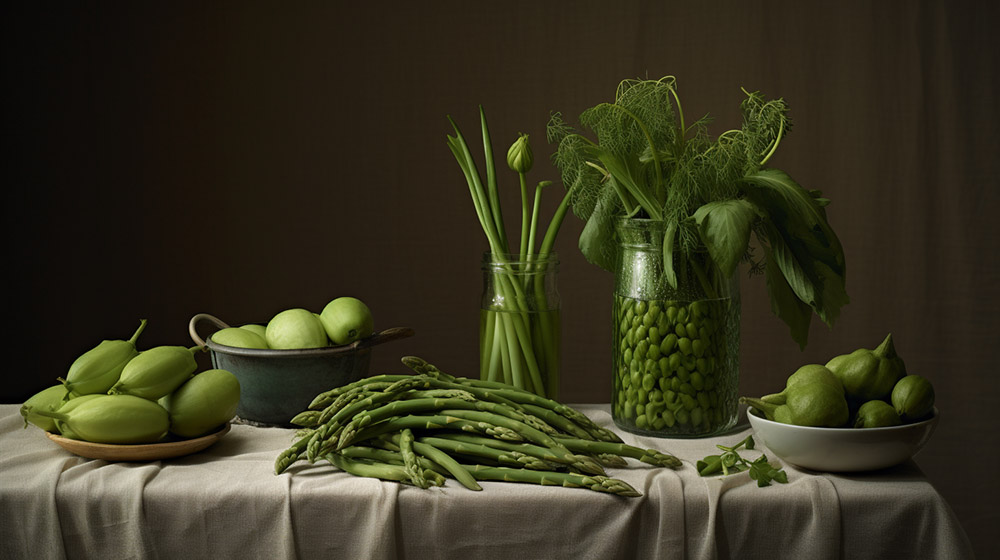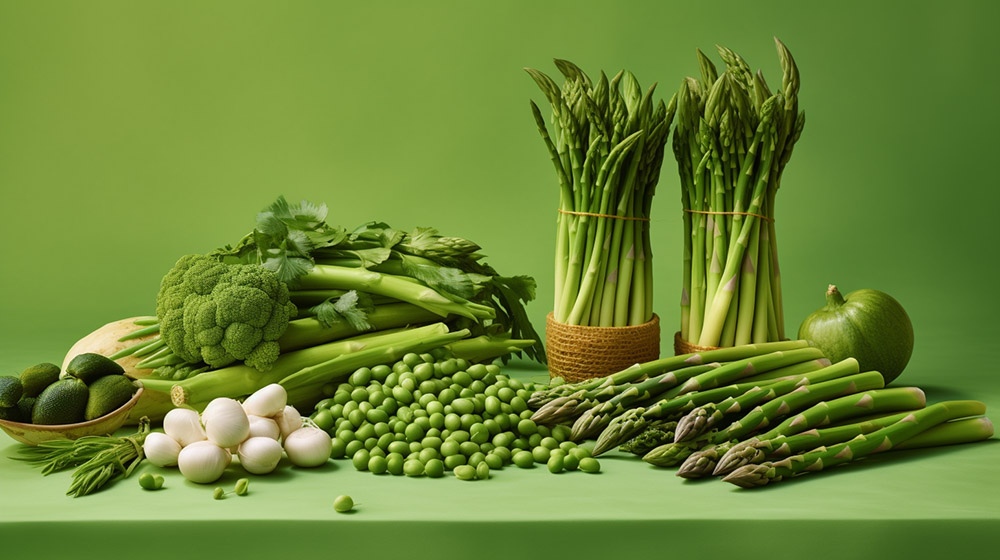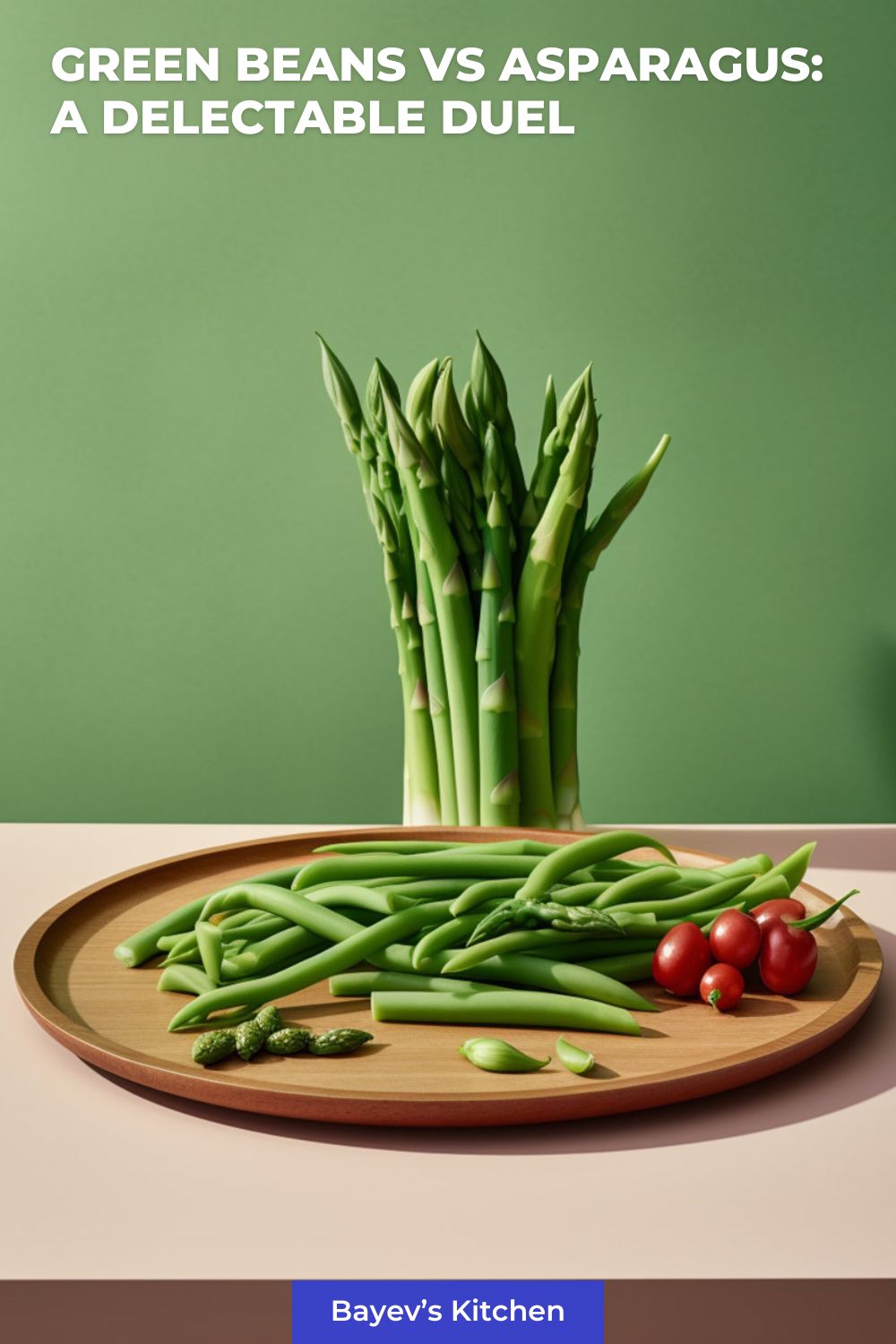Asparagus and green beans are two popular and highly versatile vegetables that grace our dinner tables regularly. They’re both packed with nutrition, flavorful, and can be prepared in countless ways. But how do they stack up against each other?
In this article, we’ll delve into the main differences, a nutritional comparison, and then follow with a detailed list of 25 facts highlighting their differences and similarities.
Main Differences
Green beans and asparagus may both be green vegetables, but they have several notable differences. Green beans are typically harvested while still young and tender, with a crisp texture and slightly sweet taste. They’re known for their versatility and can be cooked in various ways, including boiling, steaming, sautéing, and even pickling.
Asparagus, on the other hand, is a perennial plant with a unique, slightly bitter flavor and a tender texture when cooked. It is harvested in the spring and comes in different varieties, including green, white, and purple. The thickness of the stalks can vary, which can affect the cooking time.

Nutrition Comparison
Here is a nutritional comparison per 100g serving of each vegetable:
| Green Beans | Asparagus | |
|---|---|---|
| Calories | 31 kcal | 20 kcal |
| Protein | 1.8g | 2.2g |
| Carbohydrates | 7g | 3.7g |
| Dietary Fiber | 3.4g | 2.1g |
| Sugars | 3.3g | 1.9g |
| Fat | 0.1g | 0.2g |
| Vitamin C | 12.2mg | 5.6mg |
| Vitamin A | 35µg | 38µg |
| Potassium | 209mg | 202mg |
| Calcium | 37mg | 24mg |
Note: Nutrition data might slightly vary depending on the variety and preparation.
25 Facts About Differences and Similarities
1. Origin
Green beans and asparagus originated from different parts of the world. Green beans are native to South and Central America, while asparagus traces its origins back to Europe, North Africa, and Western Asia.
2. Plant Family
Green beans belong to the Fabaceae family, which is the pea family, while asparagus belongs to the Asparagaceae family.
3. Growing Season
Asparagus is typically a spring vegetable, while green beans grow well during summer and early fall.
4. Varieties
Green beans come in many varieties, including snap beans, string beans, and wax beans. Asparagus also comes in different types, including green, white, and purple.
5. Flavor
Green beans have a mildly sweet and earthy flavor, while asparagus offers a unique, slightly bitter taste.
6. Texture
Both vegetables offer a satisfying crunch when cooked properly, but asparagus tends to be more tender and less fibrous than green beans.
7. Preparation
Green beans and asparagus can both be steamed, sautéed, roasted, or grilled. However, asparagus is also often served blanched and chilled in salads.
8. Shelf Life
Green beans generally have a longer shelf life and can be stored in the refrigerator for about a week. Asparagus, on the other hand, is best consumed within a few days of purchase.
9. Nutritional Value
While both are packed with vitamins and minerals, green beans contain more fiber and Vitamin C, while asparagus has more protein and Vitamin A.

10. Edible
Parts
In asparagus, the entire stalk is edible, while in green beans, both the pod and the tiny beans inside can be eaten.
11. Health Benefits
Both vegetables provide a range of health benefits, including improved digestion, enhanced immune function, and reduced risk of chronic diseases, thanks to their high fiber and antioxidant content.
12. Cultural Significance
Both green beans and asparagus have significant cultural roles. Green beans are a staple in many cuisines worldwide, while asparagus is celebrated during harvest season in many parts of Europe.
13. Pairings
Green beans pair well with ingredients like garlic, tomatoes, and almonds, while asparagus is often paired with butter, hollandaise sauce, and eggs.
14. Preservation
Both green beans and asparagus can be preserved by pickling or canning, though it’s more common to find pickled green beans than asparagus.
15. Seasonality
Asparagus has a relatively short season in the spring, while green beans are available more widely throughout the year.
16. Cost
Asparagus is usually more expensive than green beans, especially out of season.
17. Popularity
Green beans tend to be more universally popular and are used in a wide range of dishes worldwide, while asparagus is considered more of a delicacy.
18. Cooking Techniques
Asparagus can be shaved into thin ribbons for salads, a technique rarely used with green beans. On the other hand, green beans are often used in stir-fries, a method not commonly employed for asparagus.
19. Classic Dishes
Green beans are the star in green bean casserole, a classic American dish, while asparagus is commonly served as a side dish with hollandaise sauce in European cuisine.
20. Handling
Green beans need to have their ends trimmed before cooking, while only the woody ends of asparagus spears need to be snapped off.
21. Nut Allergies
Green beans can be a good alternative for people with nut allergies as they have a similar crunch to nuts when cooked correctly.
22. Grilling
Both vegetables are excellent for grilling. Green beans often need to be cooked in a grill basket to prevent them from falling through the grates, while asparagus can be cooked directly on the grates.
23. Frozen Varieties
Both green beans and asparagus are available in frozen forms, offering convenience and longer storage.
24. Diets
Both green beans and asparagus are low in calories and carbohydrates, making them a good choice for people following weight loss or low-carb diets.
25. Vegan and Vegetarian Dishes
Both asparagus and green beans are widely used in vegan and vegetarian cooking due to their high nutrient content and versatility.
In conclusion, while green beans and asparagus have their distinct characteristics, both are fantastic additions to a healthy and balanced diet. Enjoy them in a multitude of culinary applications and reap their numerous health benefits.

